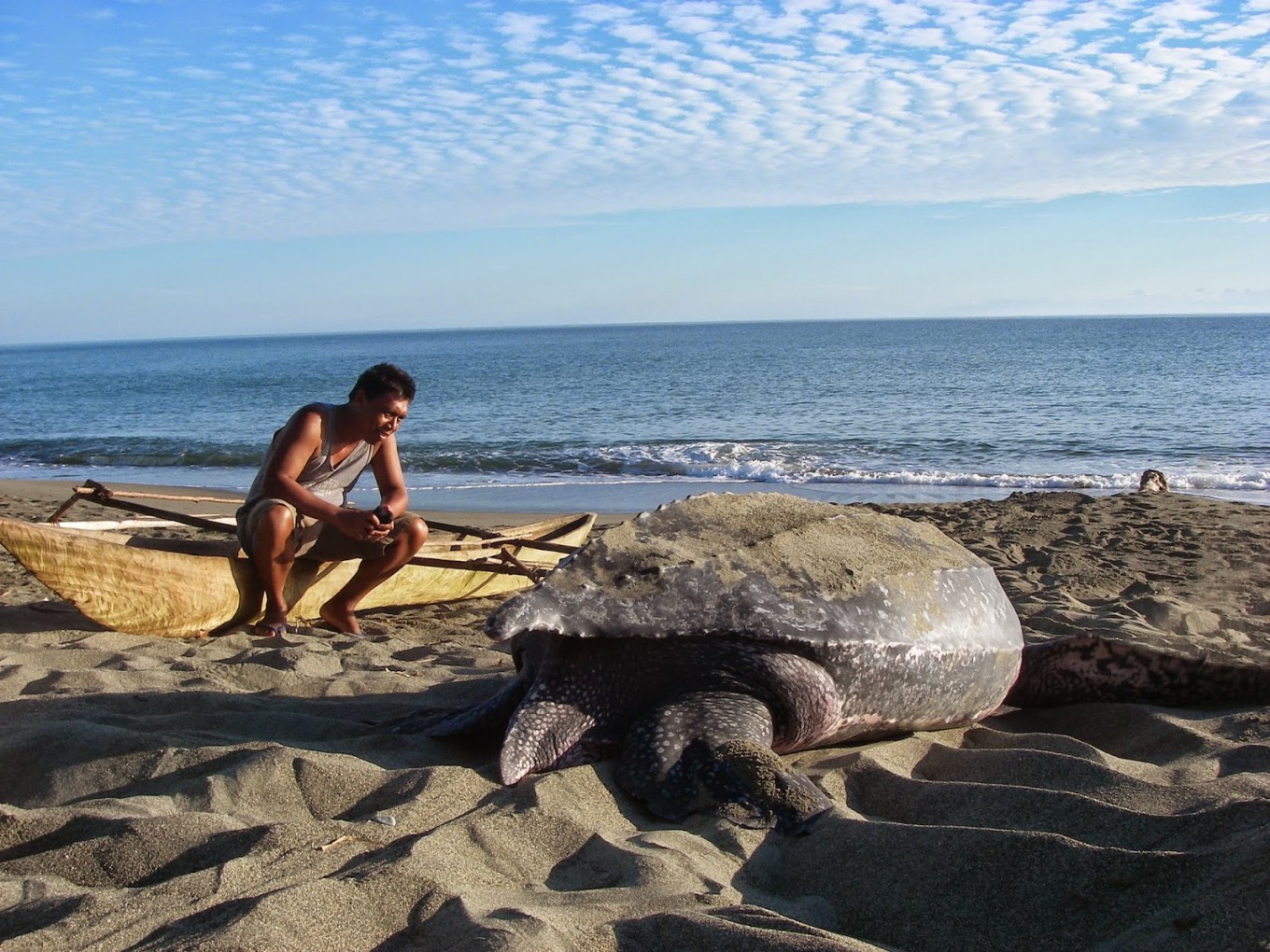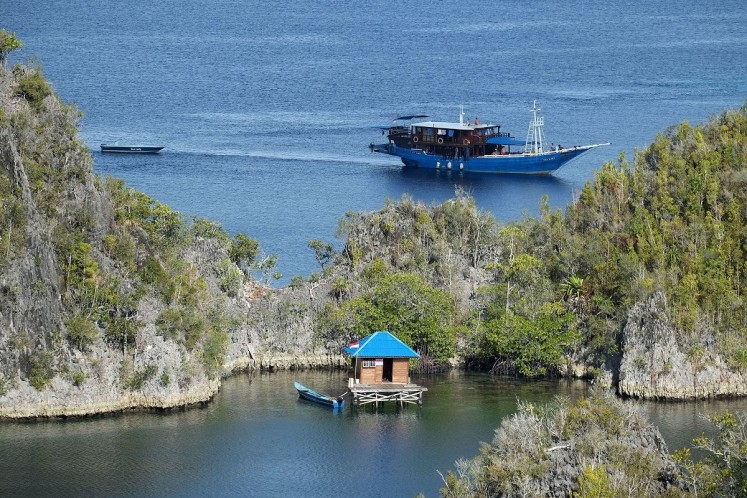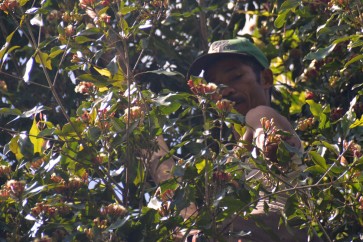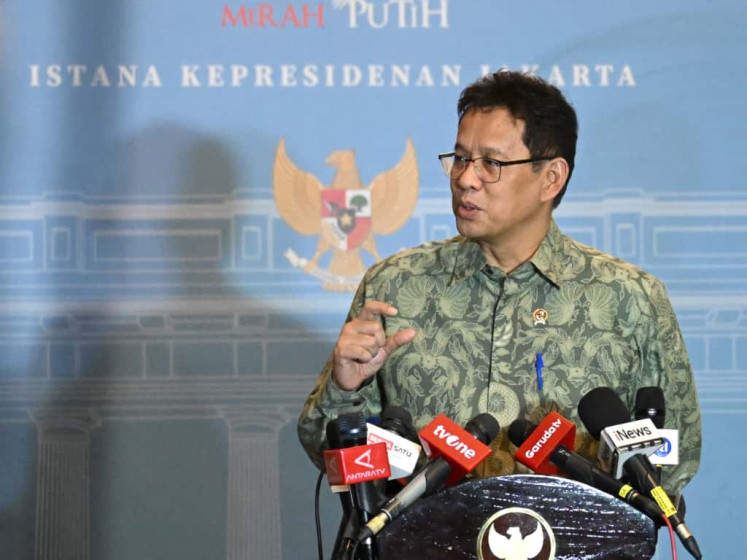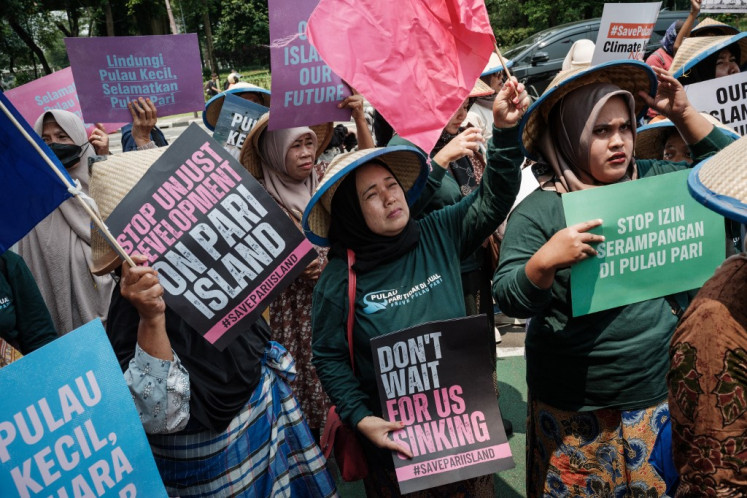Popular Reads
Top Results
Can't find what you're looking for?
View all search resultsPopular Reads
Top Results
Can't find what you're looking for?
View all search resultsSea full of jellyfish in Raja Ampat? Possible, if sea turtles disappear
Change text size
Gift Premium Articles
to Anyone
W
hen the sea becomes thronged with jellyfish because of the absence of their predators, the endangered sea turtles, we will probably think twice before swimming. Yes, jellyfish do not go after humans, but they can sting divers and swimmers who have direct contact with the creatures.
This is not an impossible scenario, at least in the Bird's Head area, in West Papua, where the leatherback turtles, which are jellyfish predators, have become critically endangered.
The Bird's Head region is world-renowned as home to the scuba-diving destination of Raja Ampat. For critically endangered leatherbacks, locally known here as penyu belimbing, it is their last stronghold in the western Pacific.
Ricardo Tapilatu, head of the Research Center for Pacific Marine Resources at the University of Papua (Unipa), points to climate change as the main culprit for the decline in leatherback numbers.
It was announced in February that Ricardo had received a grant from the Pew Fellows Program in Marine Conservation, becoming one of the eight international fellows in 2018. Using the US$150,000 grant over a three-year project, he wants to study how climate change has affected the leatherback population in the Bird's Head area.
Read also: W. Kalimantan declares 'extraordinary event' over sea turtle deaths
"I think this is a great opportunity, because I have been doing the research for years. I know that climate change is one of the biggest problems," Ricardo told The Jakarta Post in a recent interview in Jakarta.
The Pew Fellows Program in Marine Conservation is part of the Pew Charitable Trusts, one of the planet's most prestigious fellowships, which began in 1996, established by the children of Joseph N. Pew and his wife Mary Anderson Pew in their parents' honor.
Two Indonesians have previously been made Pew marine fellows in the past. Last year, Raymond Jakub, a marine scientist with Rare Indonesia, became a fellow for his tech-based, fish catch-recording project and in 2013, Meity Mongdong, now a senior manager of Conservation International Indonesia, was named for her project developing custom-based marine protection in the Bird's Head region.
Ricardo has been focusing for years on studying the leatherback. Prior to the Pew Award, he obtained multiple grants including from the Marine Turtle Conservation Funds (MTCF) and in 2013 a Marine Conservation Action Fund (MCAF) grant for his Bird's Head Leatherback Conservation Program.
"Combining my previous efforts with the current one [from Pew], we can at least learn something about what action we need to take to save the population," said Ricardo.
There has been a steep decline in leatherback numbers, estimated at 5.9 percent per year, amid threats to nest survival, which include predation by pigs and dogs, tidal inundation, erosion and extreme beach temperatures.
In his Pew-funded study, Ricardo will use a variety of sensors, including data loggers, to record sand and incubation temperatures on Jamursba Medi Beach, one of leatherbacks’ primary nesting beaches in the region.
The sex of leatherback hatchlings is determined by the incubation temperature. Rising beach temperatures may be affecting the hatching success and the sex ratio of new generations, potentially limiting the ability of populations to reproduce and recover.
"The goal is to produce more hatchlings with better fitness," said Ricardo, referring to his Pew-funded study.
Raja Ampat in West Papua. (JP/Jerry Adiguna)"There should be a balance between the number of females coming every year and the number of hatchlings they produce. The hatchlings will return to the nesting beach after 10 to 15 years."
In addition to satellite sensors and apart from the data logger, Ricardo will rely on weather stations to record important parameters related to global warming, such as air temperature, humidity, rainfall, wind direction and sun penetration.
"By using the combinations we can discover whether there is a problem associated with global warming," said Ricardo.
Ricardo said the benefits of his coming study would be enjoyed by future generations to get a sense of how vital marine resources are.
"I am quite old and I don't know whether my work will be worthwhile and I will only see the results after 20 or 25 years. But at least I have already initiated it," said Ricardo.
An earlier version of this article contains an error concerning Pew Charitable Trusts. The organization began in 1996 and was established by the children of Joseph N. Pew and Mary Anderson in their parents' honor.

